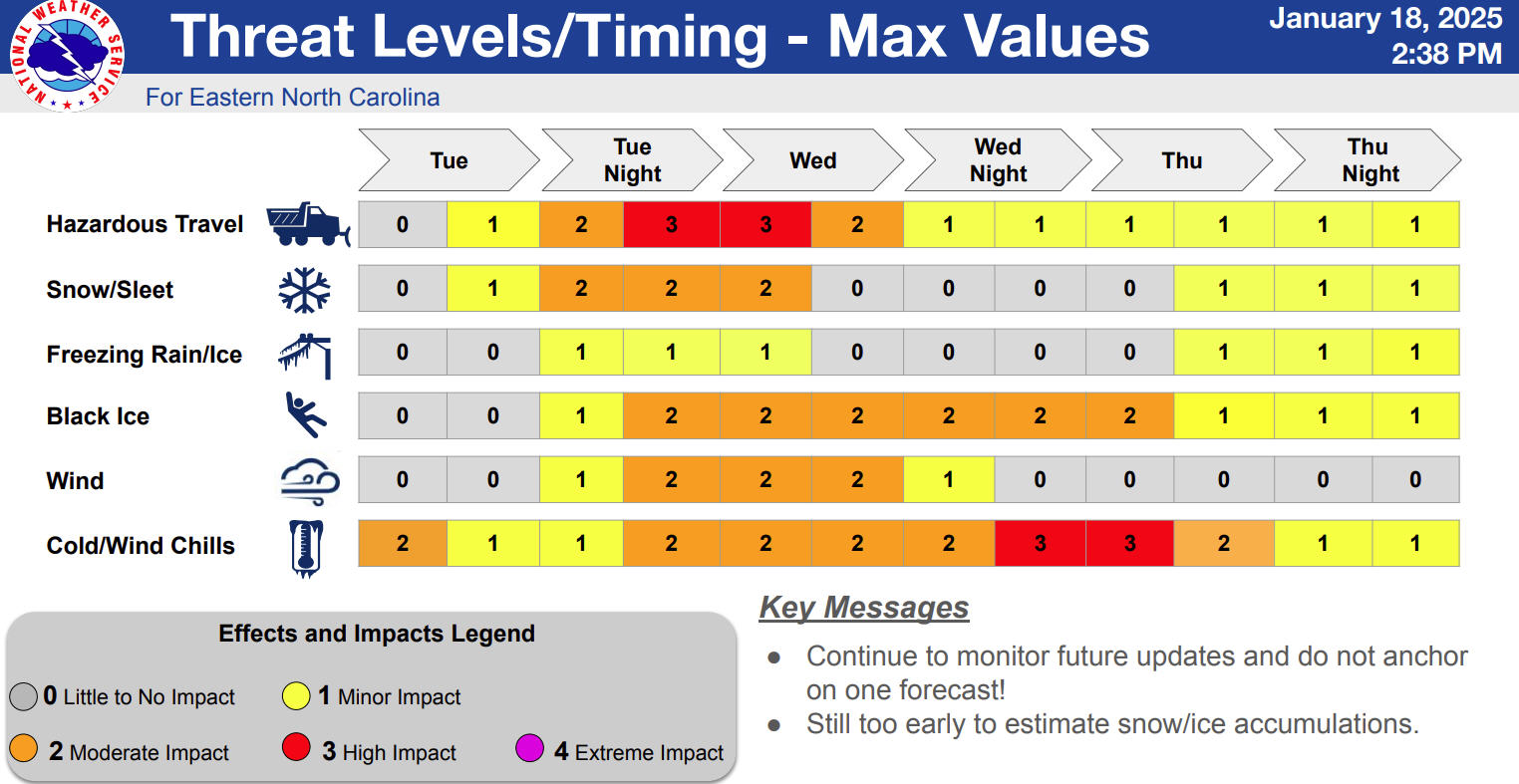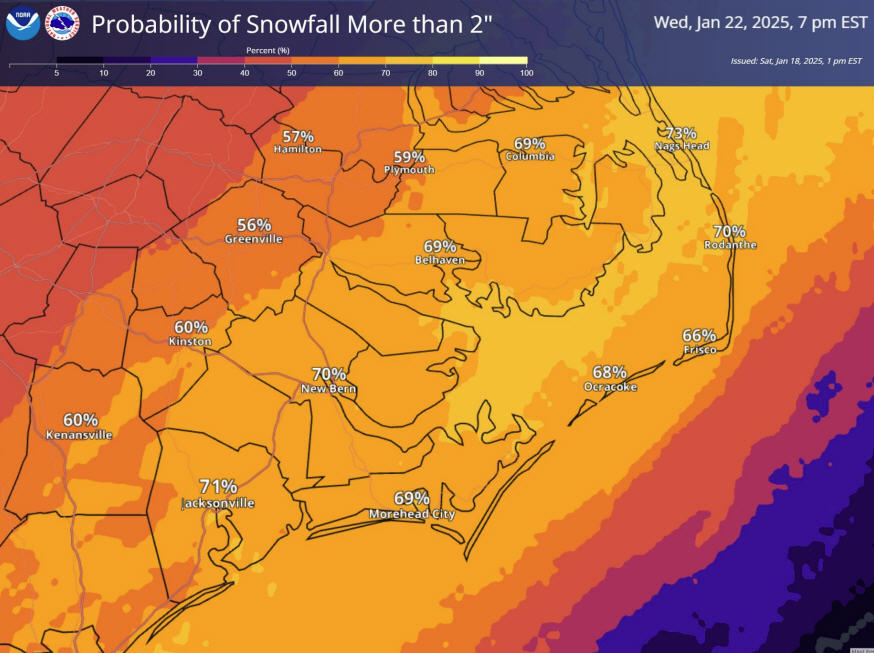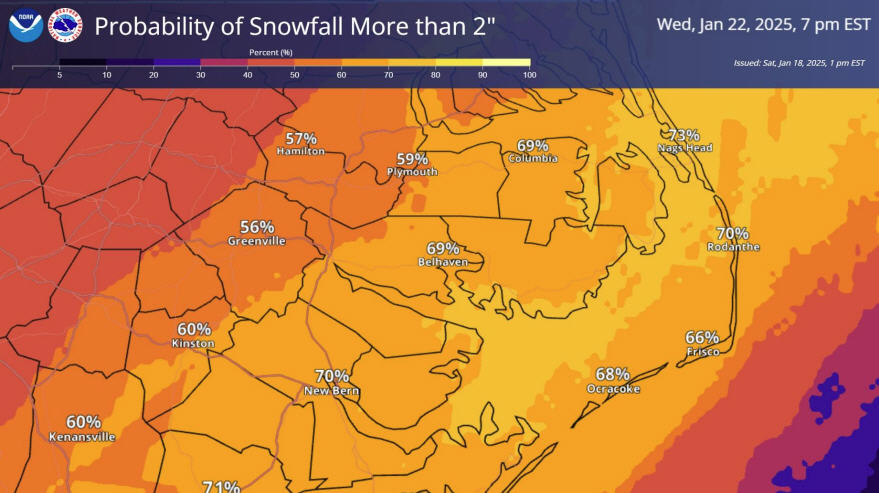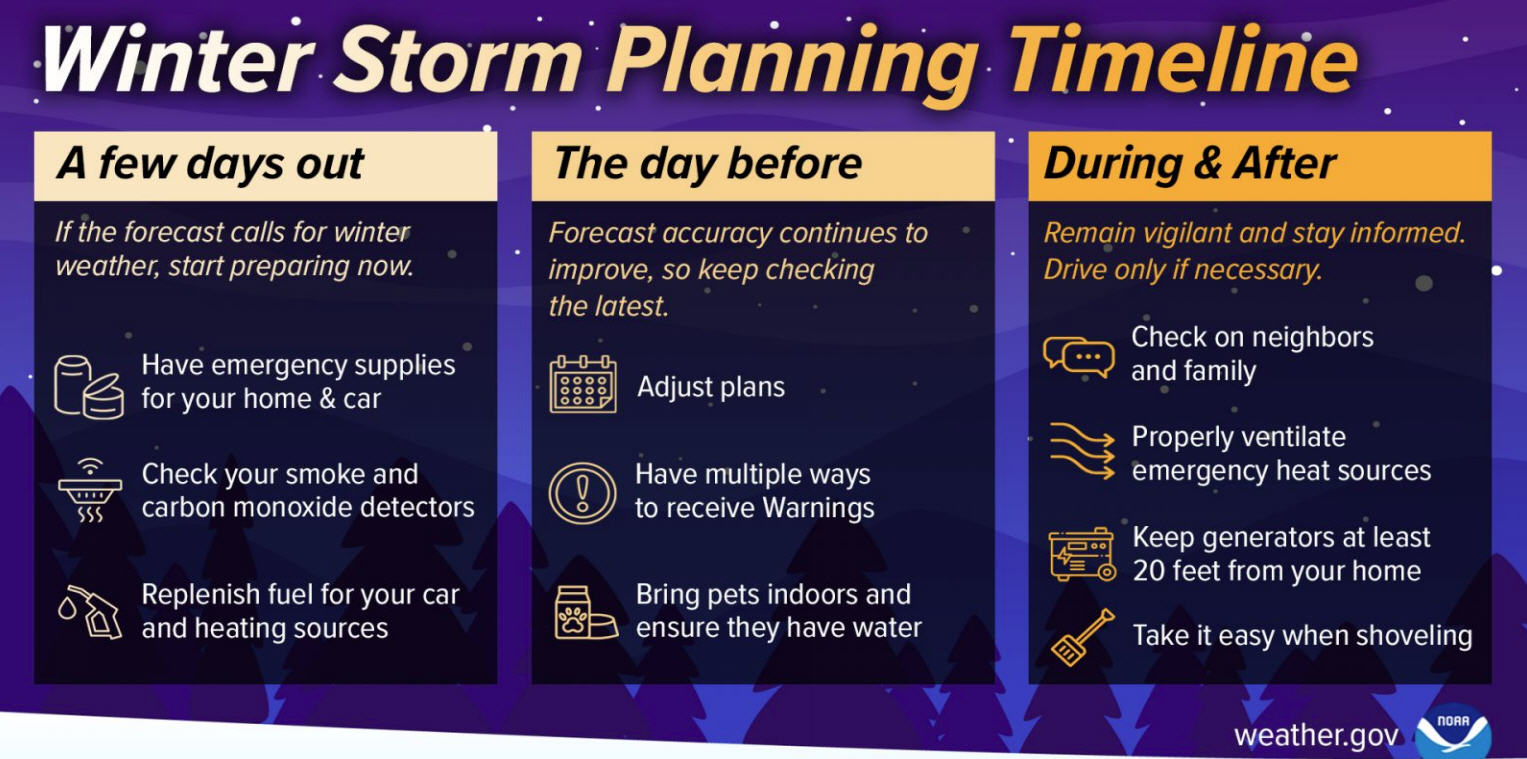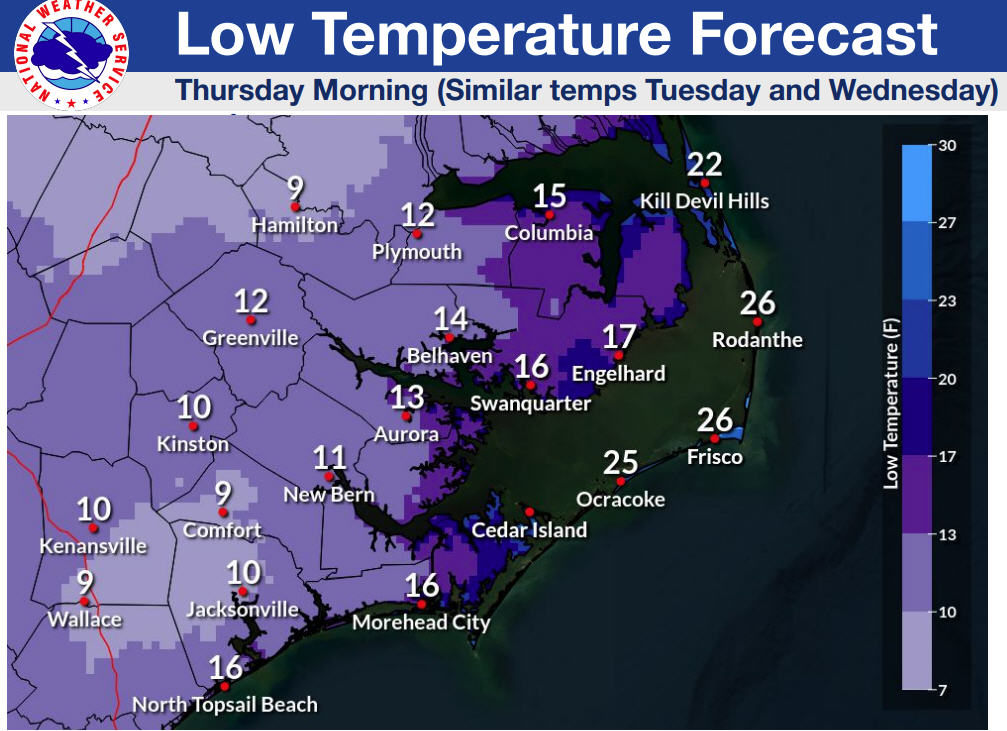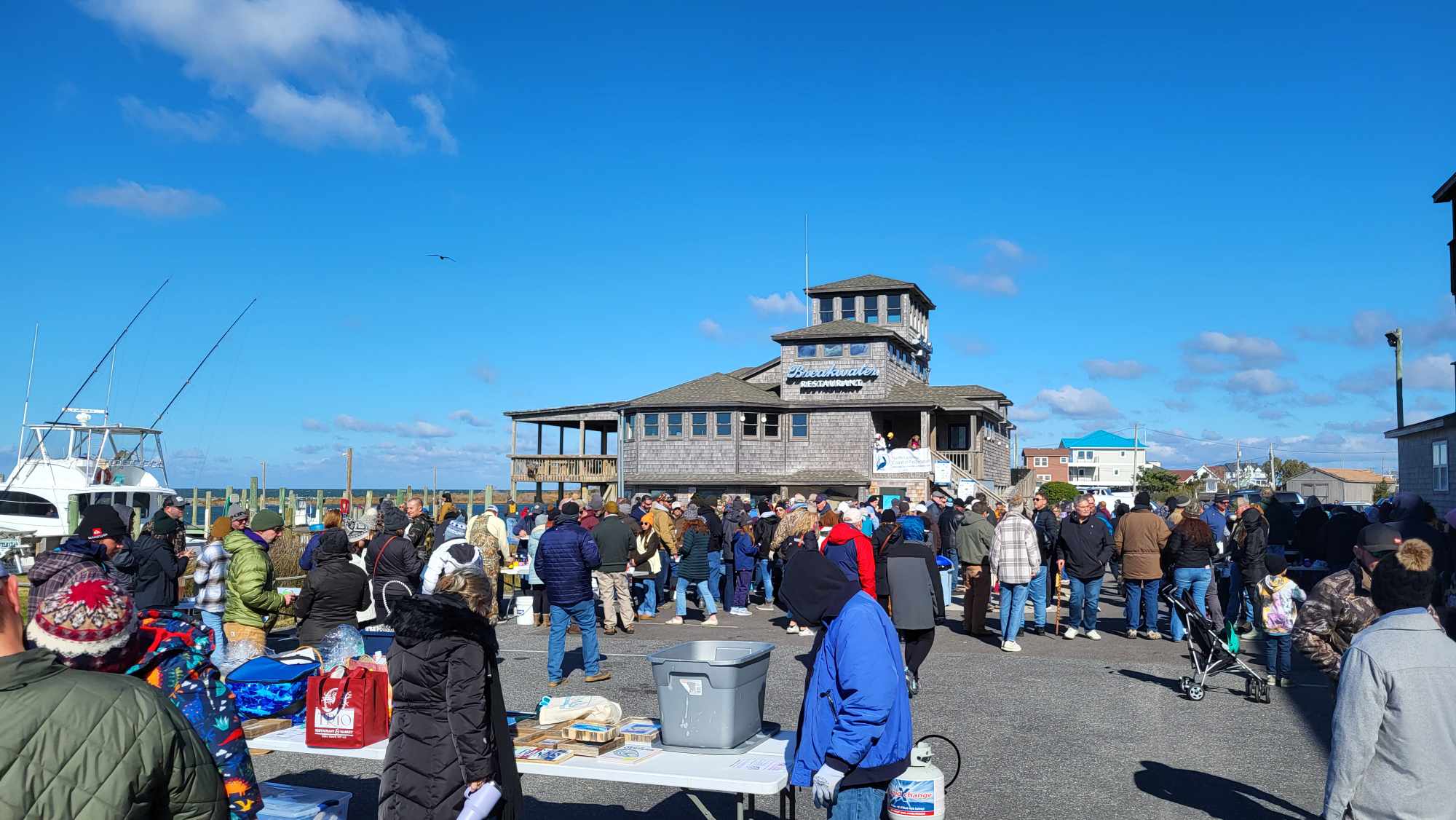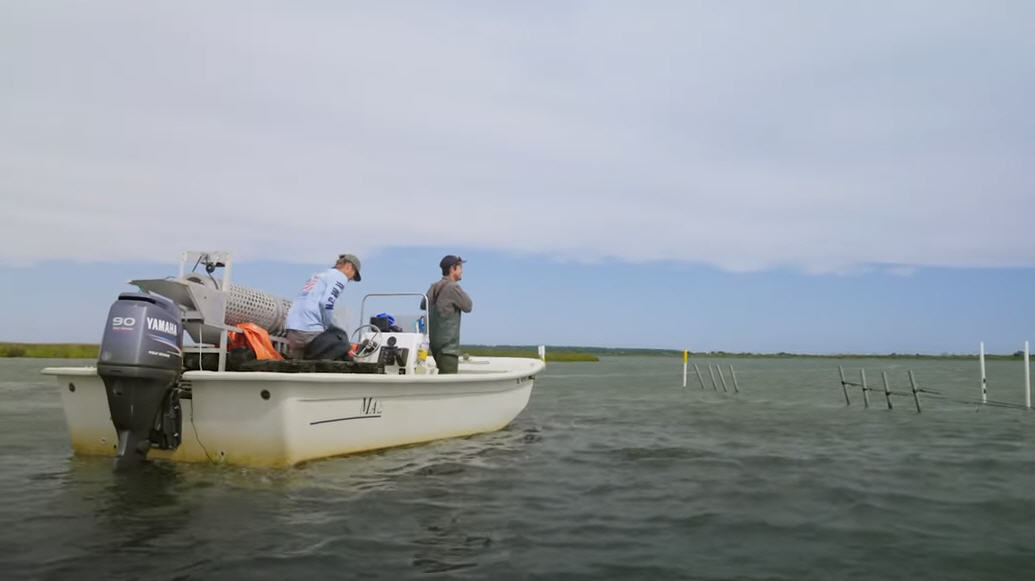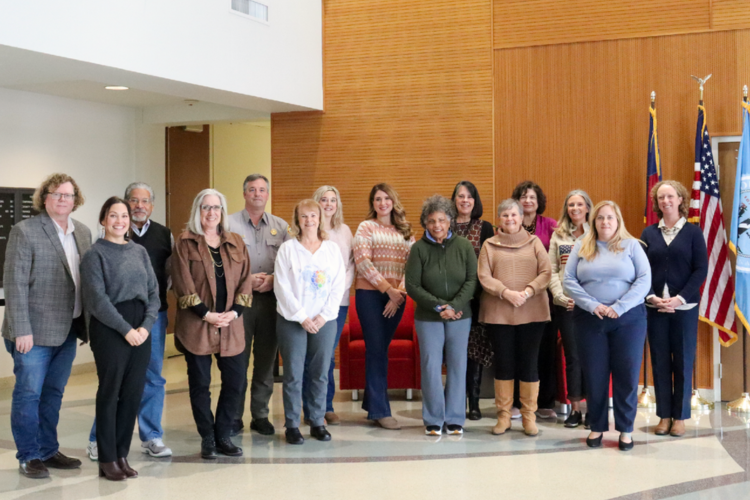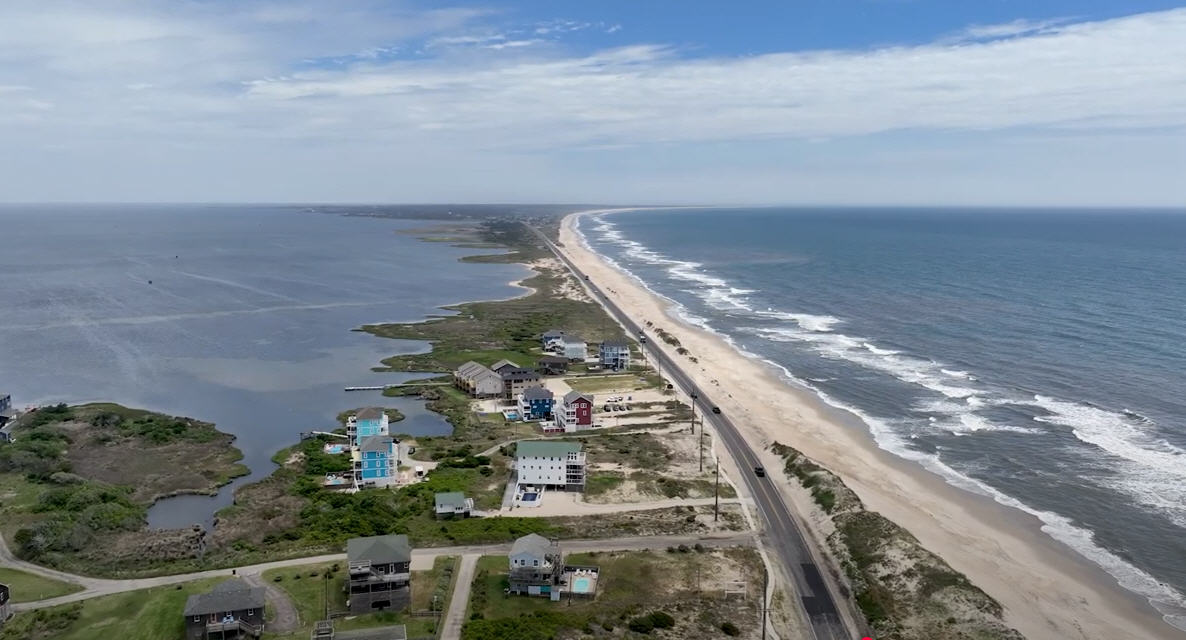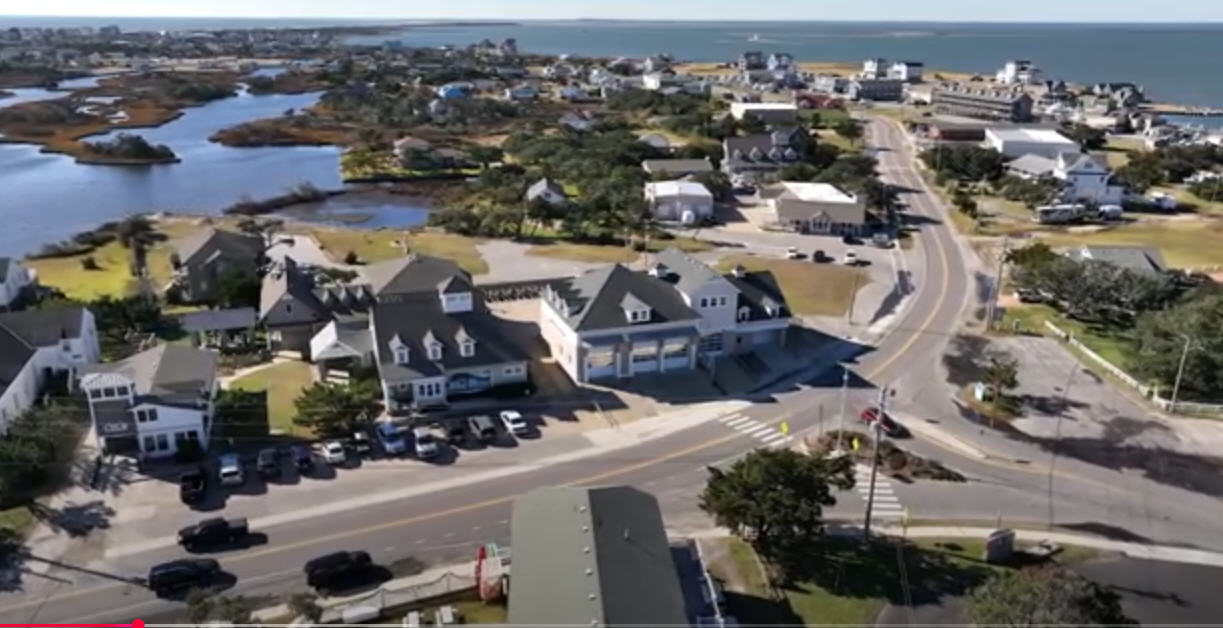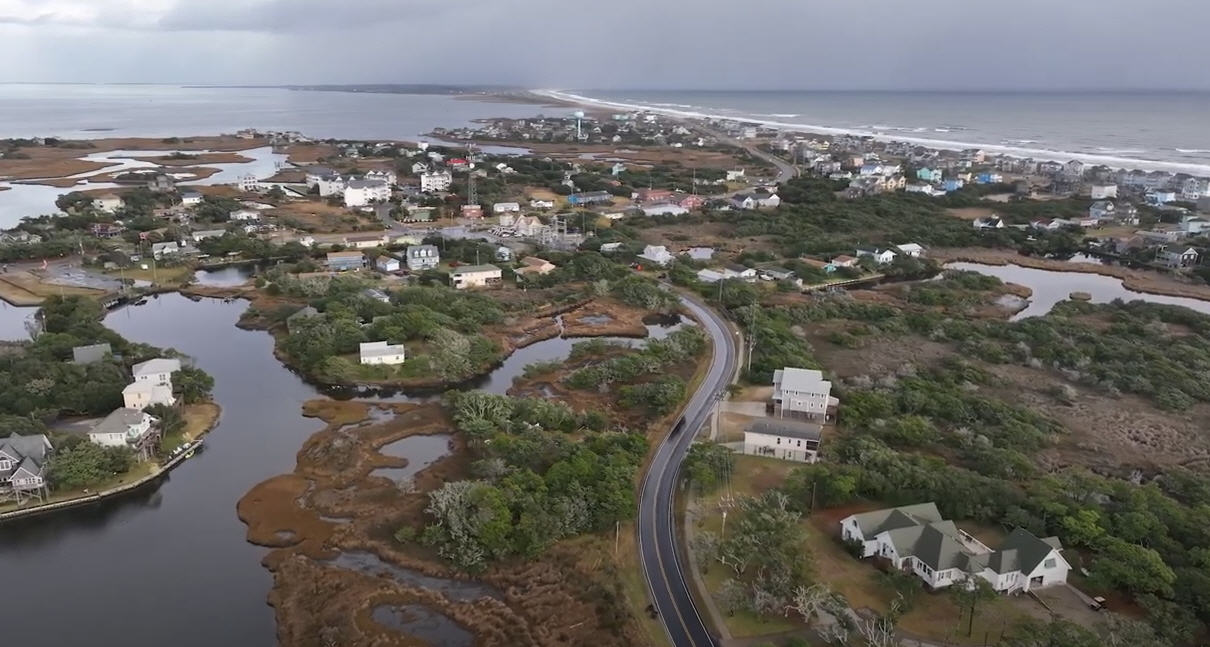An Unexpected Visit to the USCGC Richard Etheridge, and a special time to remember the rescue of the E.S. Newman
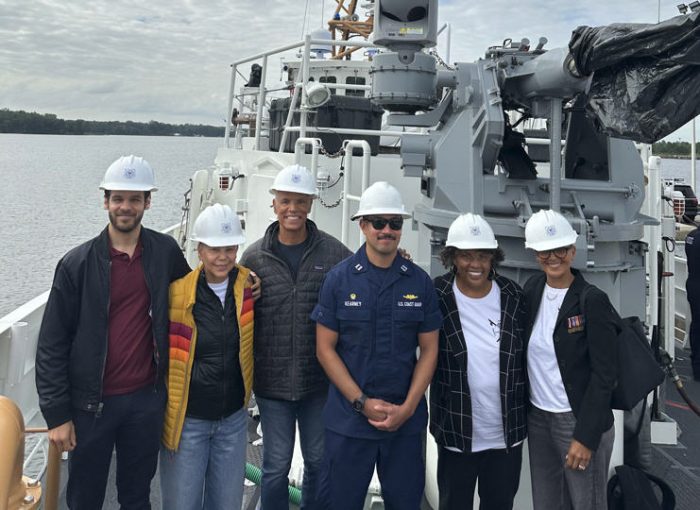
By Joan Collins, Board Member, Pea Island Preservation Society, a 501(c)(3) non-profit organization
Recently, I was presented with an exciting opportunity to board the U.S. Coast Guard Cutter (USCGC) Richard Etheridge while it was temporarily docked at the USCG Shipyard in Baltimore and had ventured this far north for the very first time. It had been over ten years since I last boarded the cutter when it was commissioned into service in 2012 in Florida, during which time I became the Director of Outreach and Education for the Pea Island Preservation Society, Inc. (PIPSI), an organization devoted to sharing the history of the historic all-Black Pea Island United States Life-Saving Service Station (USLSS) led by Keeper Etheridge.
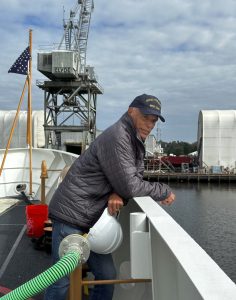
he worked on a cutter as a Mess Attendant in 1939.
I knew it would be a perfect opportunity to share information about our Freedmen, Surfmen, Heroes education initiative, a program aimed at teaching this history to youth, including, in particular, the unique and fascinating story of the USCGC Richard Etheridge and its connection to the Pea Island station.
The USCGC Richard Etheridge, based in Miami, Florida, is the second of the Coast Guard’s Sentinel-Class Cutters. In 2012, the cutter was commissioned into service in Port Everglades, Florida, in honor of its namesake Richard Etheridge, who was once enslaved on Roanoke Island, fought for freedom during the Civil War, and became the first African American in the nation to command a USLSS station.
On January 24, 1880, Etheridge, who at the time was the lowest ranked surfman at a neighboring station, was selected to be the Keeper (the person in charge of a life-saving station) at the Pea Island station.
For 67 years, starting in January 1880 when Etheridge took command and ending in March 1947 when the station closed, the life-saving station at Pea Island was staffed primarily with Black surfmen in the USLSS/USCG. It is the only station in USLSS history manned by an all-African American crew, and one of only two all-African American life-saving stations in Coast Guard history, the other being a station in New York re-activated for about two years during World War II.
Etheridge and his crew are most known for their October 11, 1896, rescue of all onboard the shipwrecked schooner E.S. Newman, (including the captain, his wife, three-year-old son, and six others) on the North Carolina coast late at night and during a hurricane.
The rescue resulted in their being awarded the USCG Gold Lifesaving Medal, albeit posthumously and some 100 years after the E.S. Newman rescue occurred. This prestigious medal is the Coast Guard’s highest honor for a daring and heroic rescue. The Coast Guard is the forerunner to the USLSS.
For me, visiting the cutter was also deeply personal, as my father had served at the Pea Island station for the duration of World War II. He was the last left in charge and helped to decommission the station in 1947.
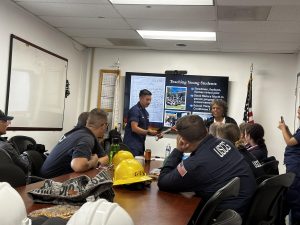
Surfmen, Heroes.
I knew firsthand how important his service at Pea Island and his Coast Guard career was to him. A visit to the cutter would also allow me the opportunity to talk with the crew about his experiences after attending a segregated USCG boot camp in 1939, and afterwards serving on a cutter as a Mess Attendant – a servant to white officers on the ship – before being transferred to Pea Island after repeated requests. I had heard him talk often about shining shoes, making beds, and serving meals when forced to join the USCG as a Mess Attendant, as enlisting as a Mess Attendant was the only option available for Blacks joining the USCG at the time. The cutter visit also presented an unexpected opportunity to bring members of my family who live in Maryland with me to the shipyard.
Our recent visit exceeded expectations. It was wonderful to interact with the crew, and quite frankly for me, an emotional moment, as I looked at their faces and saw their interest in learning the history associated with the cutter’s namesake and hearing about my father’s life. Likewise, my family loved meeting the crew. Everyone had a wonderful time and especially enjoyed boarding and touring the cutter from top to bottom and learning of its role in the USCG.
As the October 11, 1896, anniversary of the rescue of the E.S. Newman is upon us, it is important to remember the challenges and inequities men like Etheridge and my father faced daily during their lifetime.
The anniversary of the rescue of the shipwrecked E.S. Newman calls us to remember this history and to think of why Etheridge and his crew would never live to wear or know of the prestigious medal they received.
A quote from one of the new Ensigns on the USCGC Etheridge, a recent 2023 Coast Guard Academy graduate, is perhaps the best reminder of what the story of Keeper Richard Etheridge and the Pea Island Lifesavers teaches us today. In an email sent to me a few days after our visit she wrote “…the crew that attended was very impressed and we left with a greater sense of pride……… Thank you for inspiring us and pushing us to think about the importance of our history so we can prevent the negatives and impulse the positives.”





